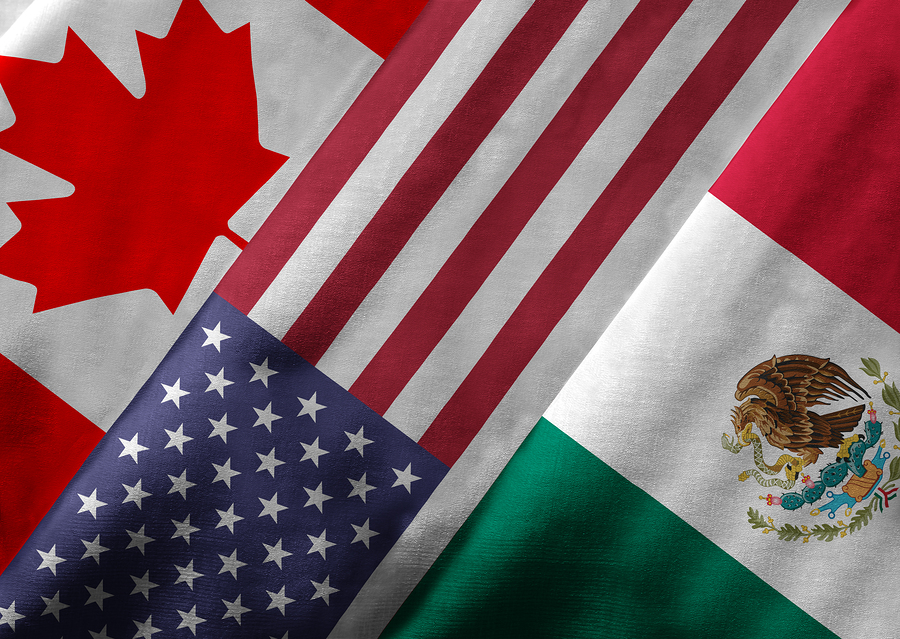With talks Aug. 16-20 on rewriting the North American Free Trade Agreement (NAFTA) and more scheduled to begin today through the Labor Day holiday, it’s a hot topic in the news — and for manufacturers. When the agreement went into effect more than 20 years ago, the goal was to make trade with Mexico and Canada across U.S. borders easier and less expensive, increasing commerce among the countries. But with President Donald Trump speaking about ending the agreement, how could changes to NAFTA impact manufacturing professionals stateside?
NAFTA
 NAFTA was a boon to the U.S. economy as the country’s exports to Canada and Mexico rose $317 billion between 1993 and 2016. But there’s more to it than economic impact in terms of dollar amounts as our neighbors to the north and south also purchased a fifth of the products U.S. manufacturers produced last year. Also impacted are those who manufacture those products as sales of U.S. products to Mexico and Canada account for 2 million manufacturers’ jobs.
NAFTA was a boon to the U.S. economy as the country’s exports to Canada and Mexico rose $317 billion between 1993 and 2016. But there’s more to it than economic impact in terms of dollar amounts as our neighbors to the north and south also purchased a fifth of the products U.S. manufacturers produced last year. Also impacted are those who manufacture those products as sales of U.S. products to Mexico and Canada account for 2 million manufacturers’ jobs.
From a viewpoint based on the above terms, NAFTA appears positive for the manufacturing sector. So, why the call for change? President “Trump says the deal has shifted U.S. manufacturing production, and jobs, to Mexico, and his administration has vowed to renegotiate or withdraw from it.” And although the three countries involved have benefitted economically since NAFTA has been in place, it’s difficult to discern whether these were direct results of the agreement or due to other factors such as trade with other countries or technological advancements.
Manufacturing impacts
In the U.S. trade representative’s Summary of Objectives for the NAFTA Renegotiation, the primary trade in goods objective for negotiations is to “Improve the U.S. trade balance and reduce the trade deficit with the NAFTA countries.” Also among those objectives is one on currency, focusing on not manipulating exchange rates. This could impact supply and demand, increasing U.S. dollar value and making the country’s products more expensive in the countries we share borders with, according to the MultiBriefs article. This could reduce demand for American-made products in Canada and Mexico, whereas if the dollar was to fall in value, demand for U.S. products could rise, increasing demand for the same goods in U.S. neighbors.
Manufacturing would be directly impacted by changes in supply and demand. But will negotiators from the three nations act on these objectives? With more rounds of negotiations planned after the current session ends Monday, there’s no clear answer as to what will occur.
